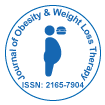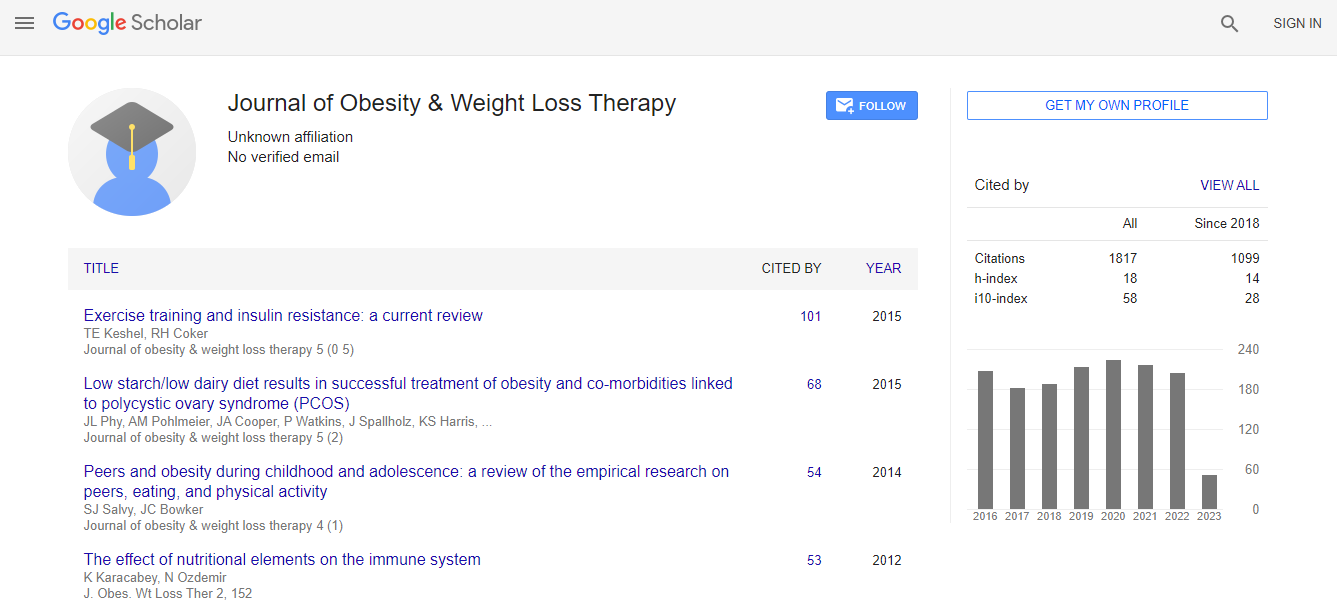Our Group organises 3000+ Global Conferenceseries Events every year across USA, Europe & Asia with support from 1000 more scientific Societies and Publishes 700+ Open Access Journals which contains over 50000 eminent personalities, reputed scientists as editorial board members.
Open Access Journals gaining more Readers and Citations
700 Journals and 15,000,000 Readers Each Journal is getting 25,000+ Readers
Google Scholar citation report
Citations : 2305
Journal of Obesity & Weight Loss Therapy received 2305 citations as per Google Scholar report
Journal of Obesity & Weight Loss Therapy peer review process verified at publons
Indexed In
- Index Copernicus
- Google Scholar
- Open J Gate
- Genamics JournalSeek
- Centre for Agriculture and Biosciences International (CABI)
- RefSeek
- Hamdard University
- EBSCO A-Z
- OCLC- WorldCat
- SWB online catalog
- CABI full text
- Cab direct
- Publons
- Geneva Foundation for Medical Education and Research
- Euro Pub
- University of Bristol
- Pubmed
- ICMJE
Useful Links
Recommended Journals
Related Subjects
Share This Page
The role calorie restriction vs. exercise and physical activity in weight loss and maintenance
International Conference on Weight Loss and Fitness Expo
Girlene Coughlin
Rutgers University, USA
Posters-Accepted Abstracts: J Obes Weight Loss Ther
Abstract
The role of Physical Activity (PA) and Exercise Training (ET) in theprevention of weight gain, initial weight loss, weight maintenance will be discussed. In particular, we will focus the discussion on the expected initial weight loss from different ET programs and explore intensity/volume relationships. Based on the present literature,unless the overall volume of aerobic ET is very high, clinically significant weight loss isunlikely to occur. Also, ET also has an important role in weight regain after initial weightloss. Overall, aerobic ET programs consistent with public health recommendations maypromote up to modest weight loss (~2 kg), however the weight loss on an individual level ishighly heterogeneous. Clinicians should educate their patients on reasonable expectationsof weight loss based on their physical activity program and emphasize that numeroushealth benefits occur from PA programs in the absence of weight loss. In addition, Girlene will discuss the importance of diet quality with nutrient dense foods as well as calorie restriction for successful weight loss and maintenance.Biography
Email: girlenecoughlin@gmail.com

 Spanish
Spanish  Chinese
Chinese  Russian
Russian  German
German  French
French  Japanese
Japanese  Portuguese
Portuguese  Hindi
Hindi 
